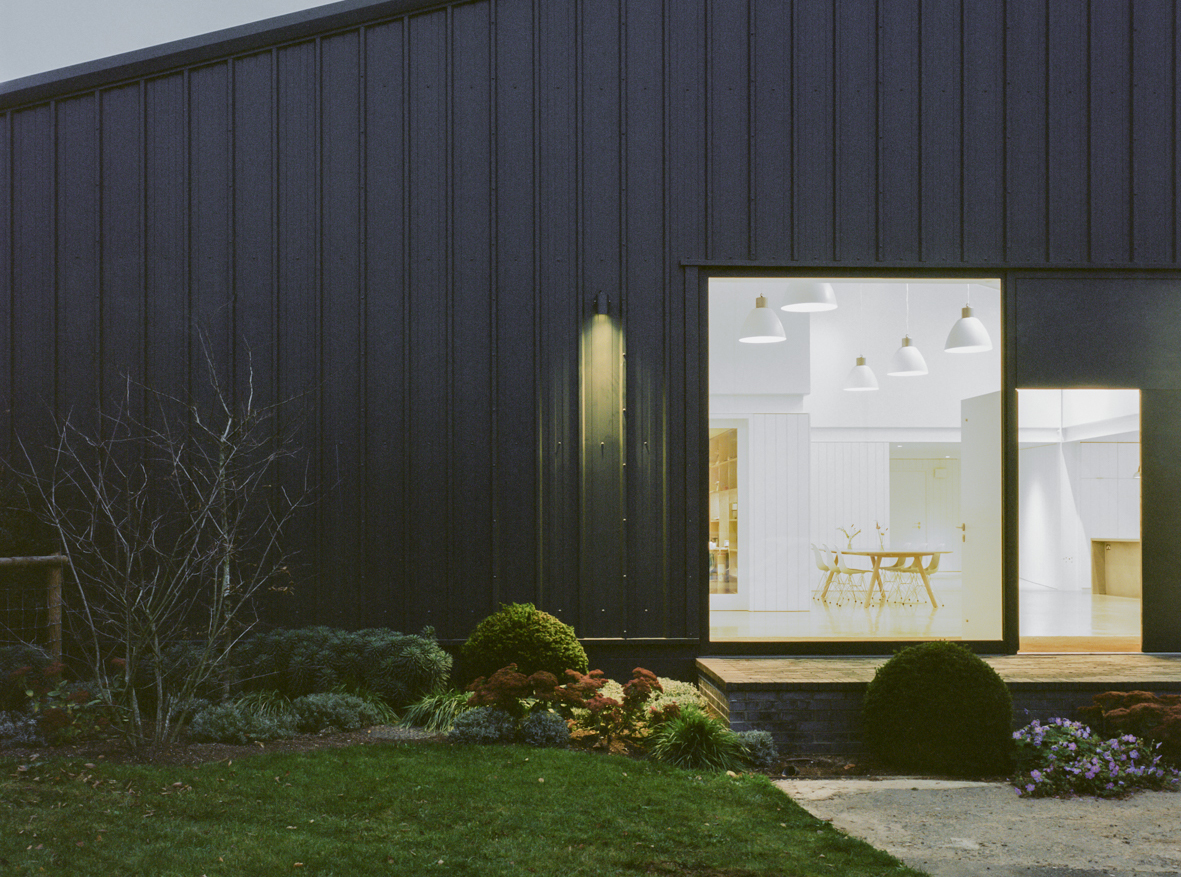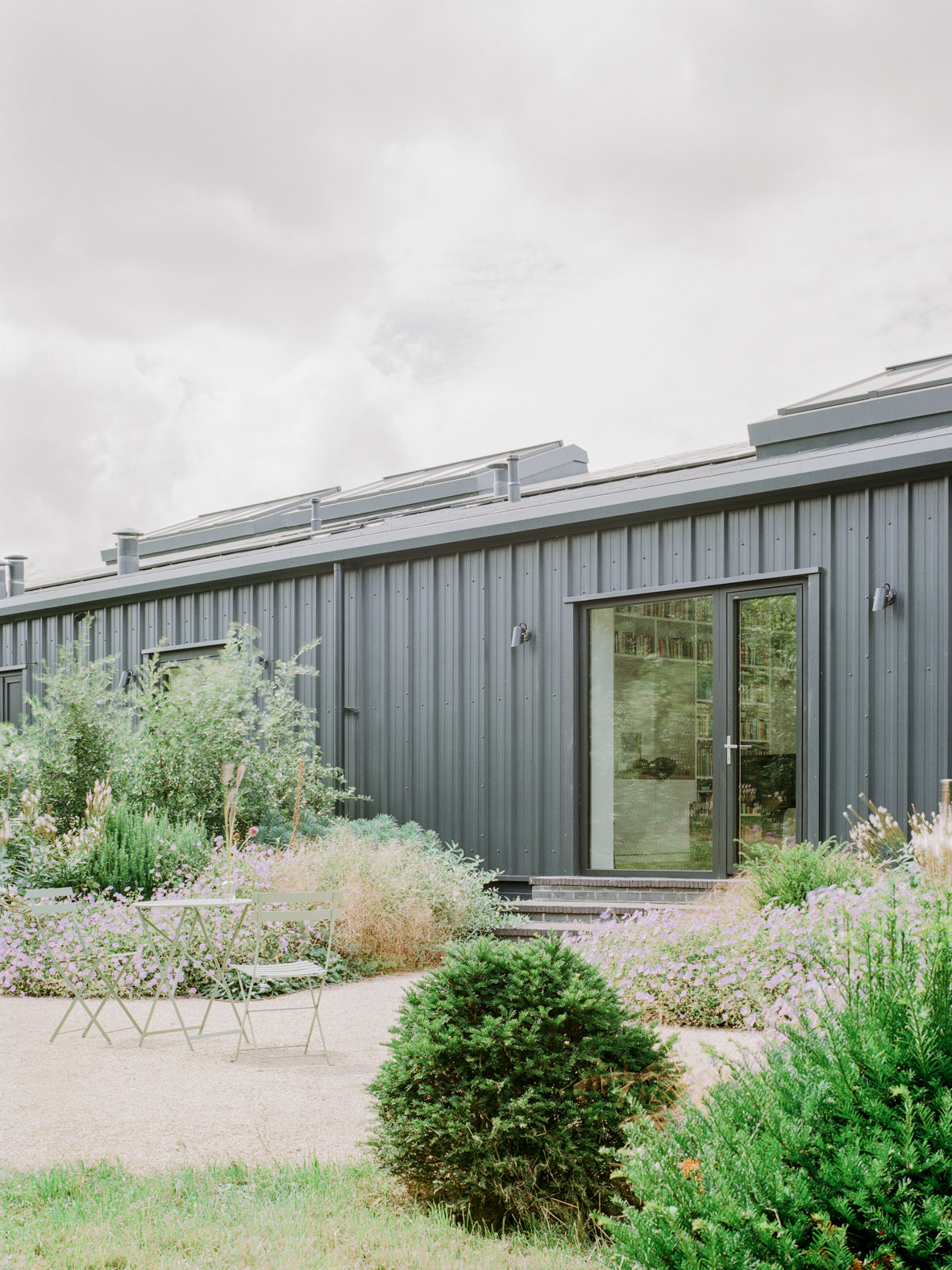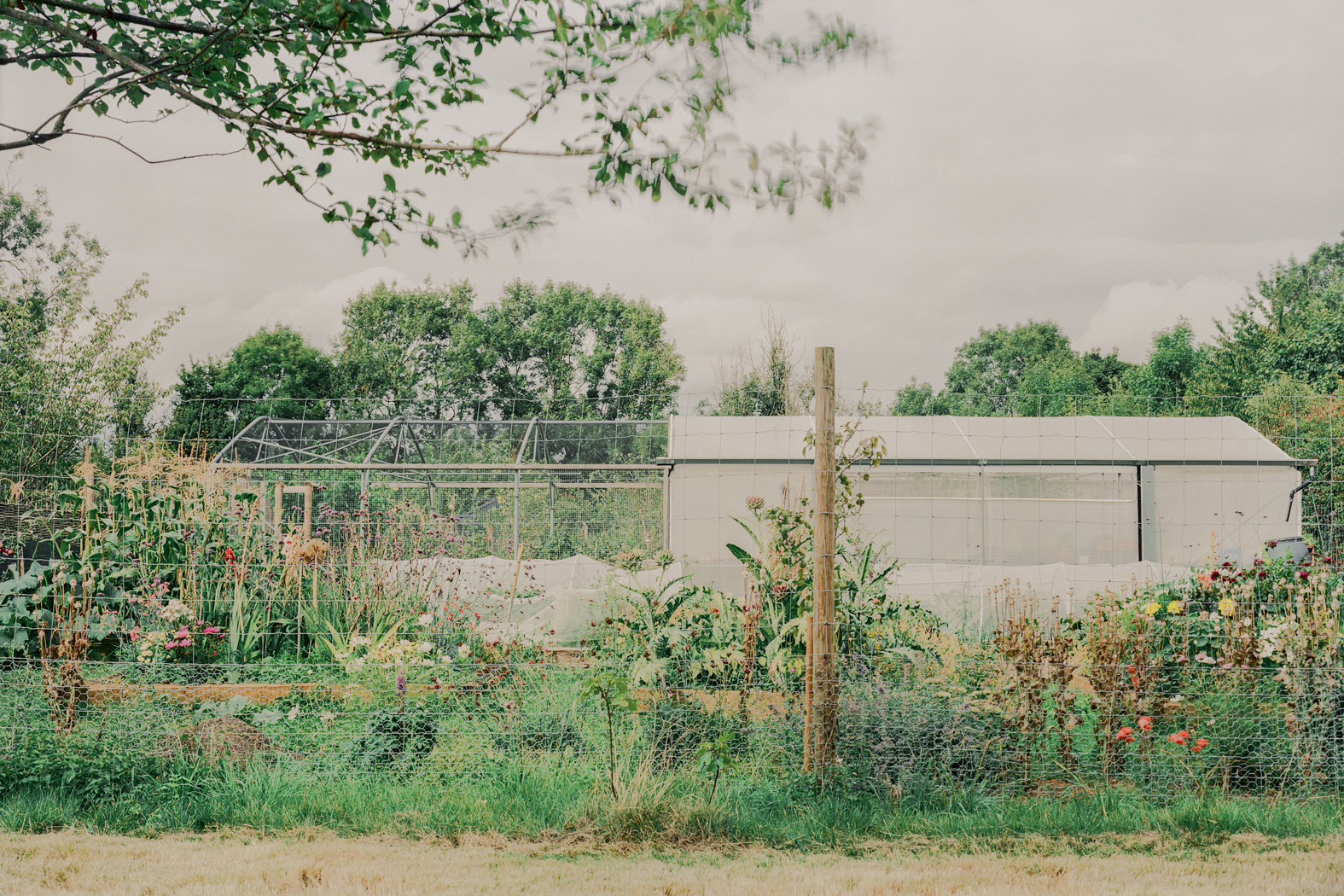The idea for Studio Richter Mahr had been in Max Richter and Yulia Mahr’s heads for two decades before it opened its doors in 2022.
“We’d been thinking about the ethos of this place for so long,” says Yulia. “We’d been doing these big art projects together — SLEEP and VOICES, in particular — which looked at very big issues. SLEEP isn’t actually about sleep or a good night’s rest, it’s about community; VOICES is about human rights. We said: ‘OK, we’ve spent our lives looking at all these big issues. Now we have to put out money where our mouth is.’”
Studio Richter Mahr — or SRM, as it’s more casually referred to — officially opened in February 2022. The multi-disciplinary arts production space is located on the site of a converted alpaca farm that sits on the edge of a 31-acre woodland. It contains a state-of-the-art recording studio and mixing room, personal studios and writing rooms for its co-founders and visiting artists-in-residence, and a kitchen where its in-house chef prepares food for staff, artists, and other guests. The building was primarily built using organic materials and designed to be carbon neutral, powered by solar panels and heat pumps. A weather station and smart technology ensures that energy is used as efficiently as possible; SRM generates enough electricity in the summer to return the surplus back to the national grid. Waste is kept low; the occupants even eat produce grown in SRM’s own on-site garden.
“It had to be the countryside for it to embody what we wanted it to,” Yulia says. “You’re so in the web of things in the city that even if you build the ideal conditions, it’s hard to take yourself out of that mindset. Whereas if you locate yourself in the countryside, where you’re much less linked, it becomes a lot easier to create something like this.”
Yulia points to a few schools and thinkers that shaped SRM. The first was Bauhaus, the German school of design, architecture, and applied arts whose teaching methods were perhaps as influential as their designed output. Her grandfather was a Bauhaus-trained architect, and many of the stories she heard in her family growing up revolved around the school. “He was in the Hannes Meyer group and went with him to Russia,” she says. “Although he had died by the time I was born, I was raised with a really deep understanding of how special those communities can be, and as I went through life, I became interested in other communities like that.” Some of those other communities include the Black Mountain College (the pioneering North Carolina art school that was a crucible for American mid-century avant-garde art, music, and poetry) and the Banff Centre for Arts and Creativity in the Canadian Rocky Mountains (where Max spent time with his early group Piano Circus). “These tend to be more educational establishments, but at the heart of SRM there is this kind of ethos about how we can build these communities,” Yulia says. “It’s not by chance that places like Black Mountain College or Banff are often located in the countryside.”
Then there were the places that hold personal value to Yulia and Max. One was Derek Jarman’s Prospect Cottage in Dungeness, Kent — the two artists visited when they first became a couple. “We made a pilgrimage there for one of our early dates,” Yulia says. Another was Arts Threshold. Founded by Brian Astbury (who had previously set up Cape Town’s The Space Theatre, South Africa’s first commercial multiracial theatre company), Arts Threshold was a London-based theatre company that Max and Yulia were both involved with in the early 1990s. “That was a place for young people to find themselves outside of the scrutiny they might normally get,” says Yulia. “It was a very communal experience. It was another place that spoke to our history together. We met there 32 years ago.”
The land that SRM sits on is in a triangular shape, with a quarry at its tip that moves into a forest. “The woman who ran the alpaca farm before us planted the whole forest — it’s only 20 years old, a lot of it was open fields before,” explains Yulia. “She had a background in science and was fantastic at growing. It’s totally organic and works beautifully in terms of what’s planted, how it’s planted, and where it’s planted.” It’s teeming with wildlife: deer, rabbits, grass snakes, and bee colonies, as well as butterflies, which SRM’s plantings were made to encourage. There are even badgers alongside the quarry — it’s illegal to disturb a sett, so SRM’s architects had to wait two years before they could even install electricity.
When it came to building the studio, the couple enlisted local architecture firm Charlie Luxton Design, who created the shell of the building and the division of the rooms. It was essential that the architects maintained harmony with their surroundings throughout the process. “We chose Charlie because he has a history of being environmentally concerned, and we felt we should be as low impact as possible,” Yulia says. “We kept the concrete floor that was here before — Max insisted that we don’t take it up. We kept the frame of the building as it was. We kept a lot of the original building and updated it.”


